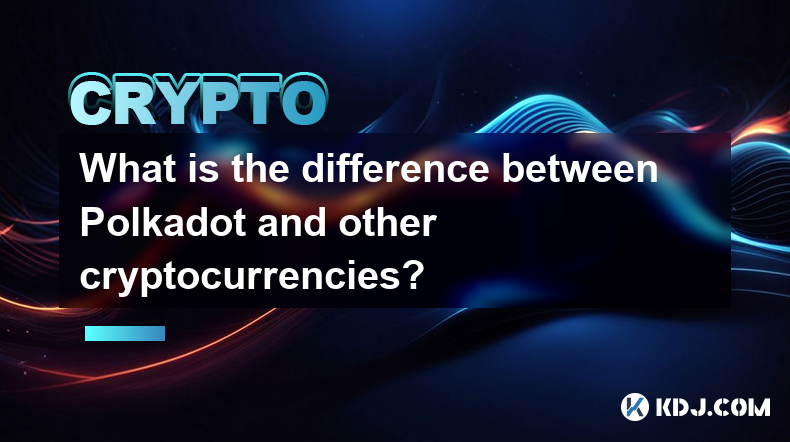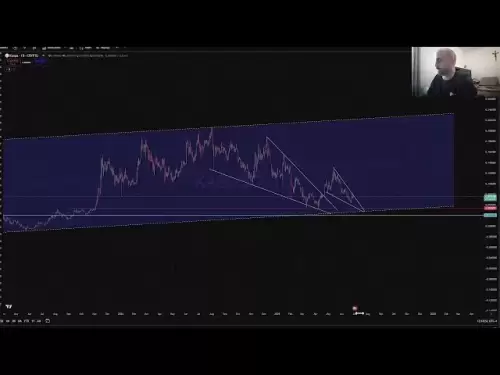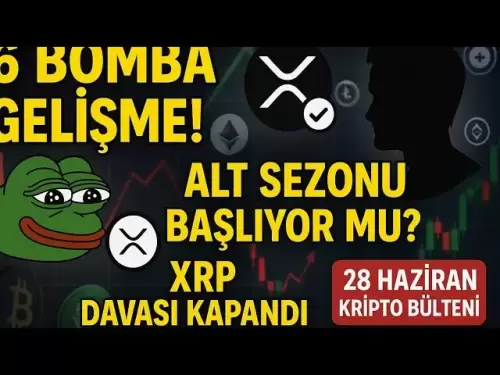-
 Bitcoin
Bitcoin $107,341.7259
0.15% -
 Ethereum
Ethereum $2,438.6204
0.70% -
 Tether USDt
Tether USDt $1.0003
-0.02% -
 XRP
XRP $2.1866
1.94% -
 BNB
BNB $649.0952
0.36% -
 Solana
Solana $150.9602
5.63% -
 USDC
USDC $0.9999
0.00% -
 TRON
TRON $0.2742
0.40% -
 Dogecoin
Dogecoin $0.1645
1.93% -
 Cardano
Cardano $0.5669
1.18% -
 Hyperliquid
Hyperliquid $37.8286
4.19% -
 Bitcoin Cash
Bitcoin Cash $491.4669
-2.74% -
 Sui
Sui $2.8150
3.06% -
 Chainlink
Chainlink $13.4184
2.91% -
 UNUS SED LEO
UNUS SED LEO $9.0809
0.27% -
 Avalanche
Avalanche $18.0295
2.60% -
 Stellar
Stellar $0.2396
1.19% -
 Toncoin
Toncoin $2.8587
0.13% -
 Shiba Inu
Shiba Inu $0.0...01160
2.59% -
 Litecoin
Litecoin $86.4192
1.45% -
 Hedera
Hedera $0.1486
1.19% -
 Monero
Monero $308.4324
0.87% -
 Polkadot
Polkadot $3.4202
1.43% -
 Bitget Token
Bitget Token $4.6436
-0.34% -
 Dai
Dai $0.9998
-0.02% -
 Ethena USDe
Ethena USDe $1.0002
0.00% -
 Uniswap
Uniswap $7.1527
3.29% -
 Pi
Pi $0.5357
-8.45% -
 Pepe
Pepe $0.0...09588
4.61% -
 Aave
Aave $259.9759
0.81%
What is the difference between Polkadot and other cryptocurrencies?
Polkadot's multi-chain architecture, NPoS consensus, and on-chain governance distinguish it from single-chain cryptocurrencies, offering enhanced scalability, interoperability, and community participation.
Mar 11, 2025 at 07:40 pm

Key Points:
- Polkadot's unique architecture distinguishes it from most other cryptocurrencies. It's designed as a multi-chain network, enabling interoperability between different blockchains.
- Unlike single-chain blockchains like Bitcoin or Ethereum, Polkadot facilitates communication and transaction transfer between independent blockchains, called parachains.
- Polkadot uses a novel consensus mechanism, Nominated Proof-of-Stake (NPoS), offering a balance between security and efficiency compared to other methods.
- Its governance model allows for on-chain upgrades and community participation in decision-making, a key differentiator from many cryptocurrencies.
- Polkadot's focus on scalability and interoperability positions it differently from cryptocurrencies prioritizing other features, like privacy or specific applications.
What is the difference between Polkadot and other cryptocurrencies?
Polkadot stands apart from many other cryptocurrencies primarily due to its innovative architecture and design philosophy. Most cryptocurrencies operate on a single blockchain, limiting their functionality and interaction with other systems. In contrast, Polkadot is designed as a multi-chain network, a "meta-protocol" capable of connecting various blockchains together. This interconnectedness is a core feature absent in many other cryptocurrencies.
This interconnectedness is achieved through parachains. Parachains are independent blockchains that connect to the Polkadot Relay Chain, the central backbone of the network. This allows for the transfer of data and assets between these different blockchains, something most other cryptocurrencies cannot do natively. For instance, a DeFi application running on one parachain could seamlessly interact with an NFT marketplace on another, without complex bridging mechanisms.
Another key differentiator is Polkadot's consensus mechanism, Nominated Proof-of-Stake (NPoS). Unlike Bitcoin's Proof-of-Work (PoW) which is energy-intensive, or other Proof-of-Stake (PoS) variants, NPoS balances security with efficiency. Validators are nominated by token holders, creating a more democratic and potentially less centralized system than some other PoS implementations. The selection process and the overall network security differ significantly from the methods employed by other cryptocurrencies.
Governance is another area where Polkadot diverges. Polkadot's on-chain governance system allows token holders to participate directly in the evolution of the protocol. This allows for community-driven upgrades and changes, a stark contrast to many cryptocurrencies where development is centralized or less transparent. This participatory model fosters a sense of ownership and allows for rapid adaptation to changing needs.
The inherent scalability of Polkadot is another significant difference. By allowing for multiple parachains to operate concurrently, Polkadot can handle a significantly larger transaction volume than many single-chain blockcurrencies. This scalability addresses a major limitation faced by numerous cryptocurrencies that struggle with network congestion and high transaction fees during periods of high demand. This feature is crucial for widespread adoption.
Polkadot's focus on interoperability sets it apart from cryptocurrencies with more specialized applications. Some cryptocurrencies are designed for specific use cases, such as privacy coins or stablecoins. Polkadot, however, aims to be a universal platform for connecting different blockchains, allowing various applications to thrive within its ecosystem. This broad scope distinguishes it from more narrowly focused projects.
The tokenomics of Polkadot also differ from many other cryptocurrencies. DOT, the native token, is used for staking, governance, and bonding parachains. This multi-faceted role distinguishes it from tokens solely used for transaction fees or utility within a single blockchain. The distribution and utility of DOT significantly impact the network's overall functionality and incentives.
The development community around Polkadot is another factor that differentiates it. Polkadot's Substrate framework allows developers to easily build and deploy their own parachains. This open-source framework encourages innovation and contributes to the expanding ecosystem, fostering a unique environment unlike many more closed-off projects.
Frequently Asked Questions:
Q: How is Polkadot different from Ethereum?
A: While both are smart contract platforms, Ethereum is a single-chain network, while Polkadot is a multi-chain network. This allows Polkadot to offer greater scalability and interoperability between different blockchains. Their consensus mechanisms also differ, with Polkadot using NPoS and Ethereum currently transitioning to a PoS system.
Q: What are the advantages of Polkadot's multi-chain architecture?
A: A multi-chain architecture enhances scalability by distributing the workload across multiple chains. It also allows for greater interoperability, enabling communication and asset transfer between different blockchains, fostering a more interconnected cryptocurrency ecosystem.
Q: How secure is Polkadot compared to other cryptocurrencies?
A: Polkadot's NPoS consensus mechanism is designed for security and efficiency. The strength of its security depends on the number of validators and the overall network participation, similar to other PoS systems, but with added features designed to mitigate specific risks.
Q: Is Polkadot decentralized?
A: Polkadot aims for decentralization through its governance model and distributed validator network. However, like many cryptocurrencies, the level of decentralization is a complex issue and subject to ongoing discussion and analysis within the community. The distribution of DOT and validator participation directly influences the network's decentralization.
Q: What are the potential risks associated with investing in Polkadot?
A: Investing in any cryptocurrency carries inherent risks, including market volatility, regulatory uncertainty, and technological vulnerabilities. Polkadot, despite its innovations, is not immune to these risks. Thorough research and risk assessment are essential before investing.
Disclaimer:info@kdj.com
The information provided is not trading advice. kdj.com does not assume any responsibility for any investments made based on the information provided in this article. Cryptocurrencies are highly volatile and it is highly recommended that you invest with caution after thorough research!
If you believe that the content used on this website infringes your copyright, please contact us immediately (info@kdj.com) and we will delete it promptly.
- XRP, Ripple, and Bitcoin: Decoding the Latest Crypto Moves
- 2025-06-29 08:30:13
- NBA Legend Scottie Pippen's Crypto Picks: SHIB and XRP in the Spotlight
- 2025-06-29 08:50:12
- Bitcoin, US Strategy, and Cryptocurrency Regulation: Navigating the Digital Frontier
- 2025-06-29 09:10:13
- Chainlink's $17 Breakout: Bullish Momentum Fueled by Mastercard Partnership
- 2025-06-29 08:30:13
- Crypto Launches Q3 2025: Top Picks to Watch
- 2025-06-29 09:10:13
- BTC Bull Token: Riding Bitcoin's Bull Run to Crypto Glory
- 2025-06-29 09:30:11
Related knowledge

How to customize USDT TRC20 mining fees? Flexible adjustment tutorial
Jun 13,2025 at 01:42am
Understanding USDT TRC20 Mining FeesMining fees on the TRON (TRC20) network are essential for processing transactions. Unlike Bitcoin or Ethereum, where miners directly validate transactions, TRON uses a delegated proof-of-stake (DPoS) mechanism. However, users still need to pay bandwidth and energy fees, which are collectively referred to as 'mining fe...

USDT TRC20 transaction is stuck? Solution summary
Jun 14,2025 at 11:15pm
Understanding USDT TRC20 TransactionsWhen users mention that a USDT TRC20 transaction is stuck, they typically refer to a situation where the transfer of Tether (USDT) on the TRON blockchain has not been confirmed for an extended period. This issue may arise due to various reasons such as network congestion, insufficient transaction fees, or wallet-rela...

How to cancel USDT TRC20 unconfirmed transactions? Operation guide
Jun 13,2025 at 11:01pm
Understanding USDT TRC20 Unconfirmed TransactionsWhen dealing with USDT TRC20 transactions, it’s crucial to understand what an unconfirmed transaction means. An unconfirmed transaction is one that has been broadcasted to the blockchain network but hasn’t yet been included in a block. This typically occurs due to low transaction fees or network congestio...

How to check USDT TRC20 balance? Introduction to multiple query methods
Jun 21,2025 at 02:42am
Understanding USDT TRC20 and Its ImportanceUSDT (Tether) is one of the most widely used stablecoins in the cryptocurrency market. It exists on multiple blockchain networks, including TRC20, which operates on the Tron (TRX) network. Checking your USDT TRC20 balance accurately is crucial for users who hold or transact with this asset. Whether you're sendi...

What to do if USDT TRC20 transfers are congested? Speed up trading skills
Jun 13,2025 at 09:56am
Understanding USDT TRC20 Transfer CongestionWhen transferring USDT TRC20, users may occasionally experience delays or congestion. This typically occurs due to network overload on the TRON blockchain, which hosts the TRC20 version of Tether. Unlike the ERC20 variant (which runs on Ethereum), TRC20 transactions are generally faster and cheaper, but during...

The relationship between USDT TRC20 and TRON chain: technical background analysis
Jun 12,2025 at 01:28pm
What is USDT TRC20?USDT TRC20 refers to the Tether (USDT) token issued on the TRON blockchain using the TRC-20 standard. Unlike the more commonly known ERC-20 version of USDT (which runs on Ethereum), the TRC-20 variant leverages the TRON network's infrastructure for faster and cheaper transactions. The emergence of this version came as part of Tether’s...

How to customize USDT TRC20 mining fees? Flexible adjustment tutorial
Jun 13,2025 at 01:42am
Understanding USDT TRC20 Mining FeesMining fees on the TRON (TRC20) network are essential for processing transactions. Unlike Bitcoin or Ethereum, where miners directly validate transactions, TRON uses a delegated proof-of-stake (DPoS) mechanism. However, users still need to pay bandwidth and energy fees, which are collectively referred to as 'mining fe...

USDT TRC20 transaction is stuck? Solution summary
Jun 14,2025 at 11:15pm
Understanding USDT TRC20 TransactionsWhen users mention that a USDT TRC20 transaction is stuck, they typically refer to a situation where the transfer of Tether (USDT) on the TRON blockchain has not been confirmed for an extended period. This issue may arise due to various reasons such as network congestion, insufficient transaction fees, or wallet-rela...

How to cancel USDT TRC20 unconfirmed transactions? Operation guide
Jun 13,2025 at 11:01pm
Understanding USDT TRC20 Unconfirmed TransactionsWhen dealing with USDT TRC20 transactions, it’s crucial to understand what an unconfirmed transaction means. An unconfirmed transaction is one that has been broadcasted to the blockchain network but hasn’t yet been included in a block. This typically occurs due to low transaction fees or network congestio...

How to check USDT TRC20 balance? Introduction to multiple query methods
Jun 21,2025 at 02:42am
Understanding USDT TRC20 and Its ImportanceUSDT (Tether) is one of the most widely used stablecoins in the cryptocurrency market. It exists on multiple blockchain networks, including TRC20, which operates on the Tron (TRX) network. Checking your USDT TRC20 balance accurately is crucial for users who hold or transact with this asset. Whether you're sendi...

What to do if USDT TRC20 transfers are congested? Speed up trading skills
Jun 13,2025 at 09:56am
Understanding USDT TRC20 Transfer CongestionWhen transferring USDT TRC20, users may occasionally experience delays or congestion. This typically occurs due to network overload on the TRON blockchain, which hosts the TRC20 version of Tether. Unlike the ERC20 variant (which runs on Ethereum), TRC20 transactions are generally faster and cheaper, but during...

The relationship between USDT TRC20 and TRON chain: technical background analysis
Jun 12,2025 at 01:28pm
What is USDT TRC20?USDT TRC20 refers to the Tether (USDT) token issued on the TRON blockchain using the TRC-20 standard. Unlike the more commonly known ERC-20 version of USDT (which runs on Ethereum), the TRC-20 variant leverages the TRON network's infrastructure for faster and cheaper transactions. The emergence of this version came as part of Tether’s...
See all articles

























































































